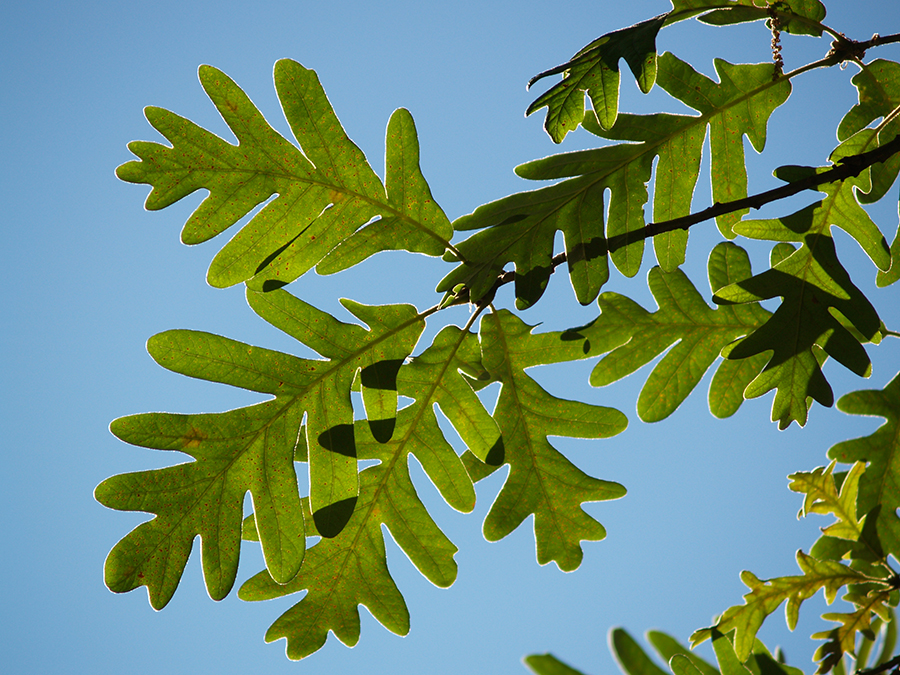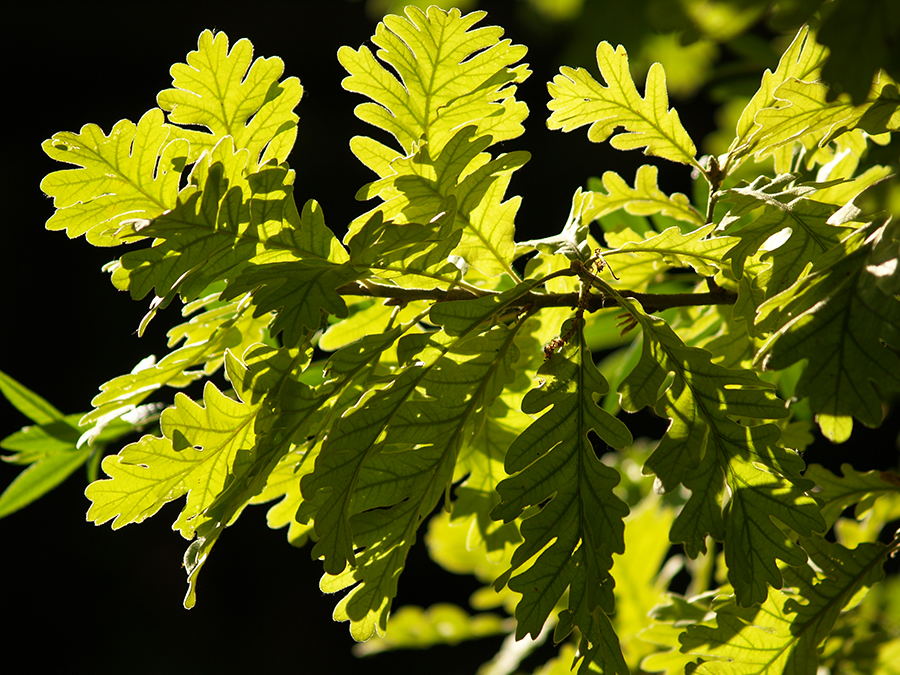
Pyrenean Oak
Quercus pyrenaica
Family and description
From the Fagaceae family, the Pyrenean oak is a deciduous tree that can reach a height of up to 25 m.
Its trunk is straight, grey, dull and cracked between the bark’s plates. The canopy is rounded.
The leaves are simple, alternate, split into deep and irregular lobes, varying greatly in cut and size. The underside of the leaf is fuzzy, as is its petiole.
Flowering occurs between April and June. The male flowers are the most conspicuous, yellow and clustered in long, pendant catkins. The female flowers are greenish and very discreet, appearing separately on the same stalk.
The fruit are acorns with a dome with short scales. They mature between October and November.
Origin and habitat
It is a tree from the Iberian Peninsula, west and southwest of France and northern Italy. It belongs to the association of Oaks from the dry and cold continental zone.
In Portugal it is abundant in the north and centre, often found on mountain tops, slopes and plateaus, predominating in granite and schist soils.
It withstands cold, snow and frost very well, as well as dry seasons and heavy rain.
Uses and curiosities
The Pyrenean oak is popular for firewood, in woodwork and carpentry, and its bark is used for tanning leather. In the past, the leaves were used as green fodder for cattle.
It is a tree with the ability to produce shoots from the base of the trunk and can also burst from the roots. Spreads well by seed (acorn). The jay is very fond of acorns and is known for burying them as food reserves for the winter. This bird is therefore responsible for the birth of many young oaks.
This species of oak, like many other deciduous trees, produces spongy spheres known as galls which protect them from wasp stings. These galls, which are not fruit, have a particularity; they can be used to make brown dye, since the tree, as a whole, is rich in tannins.


